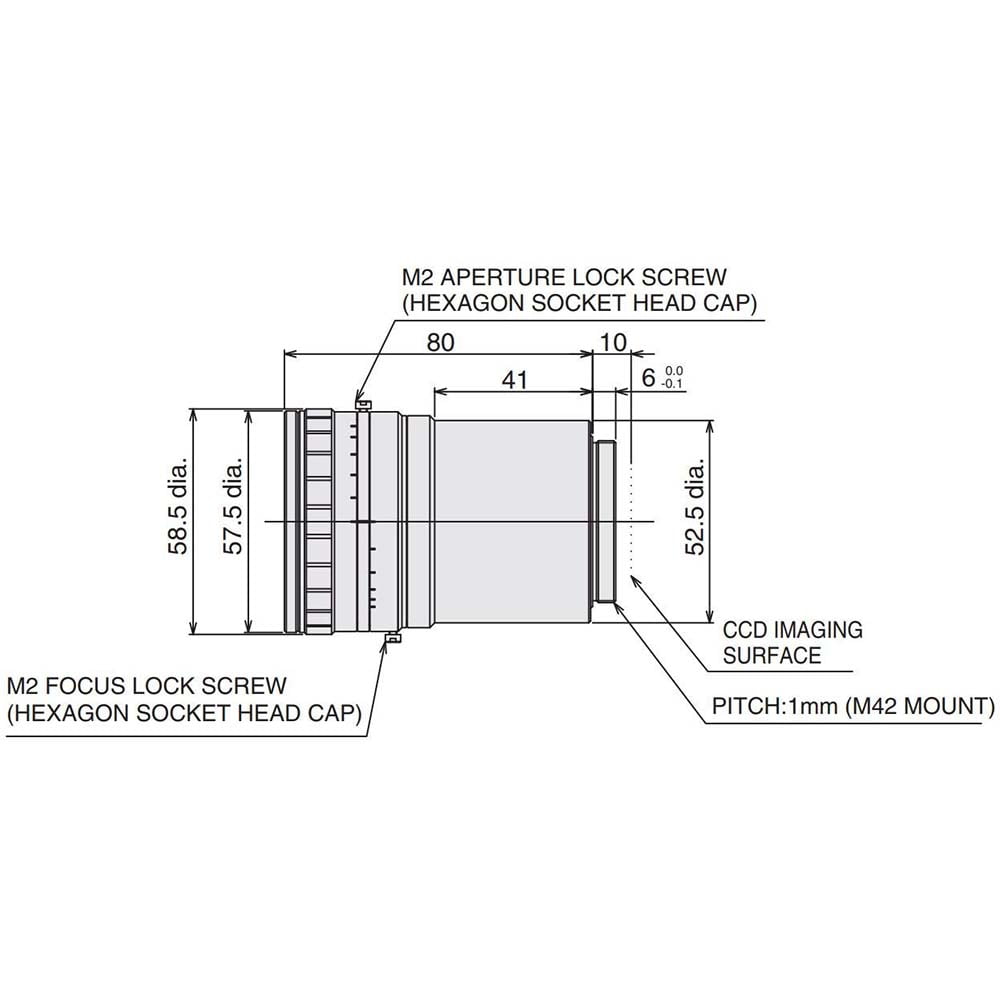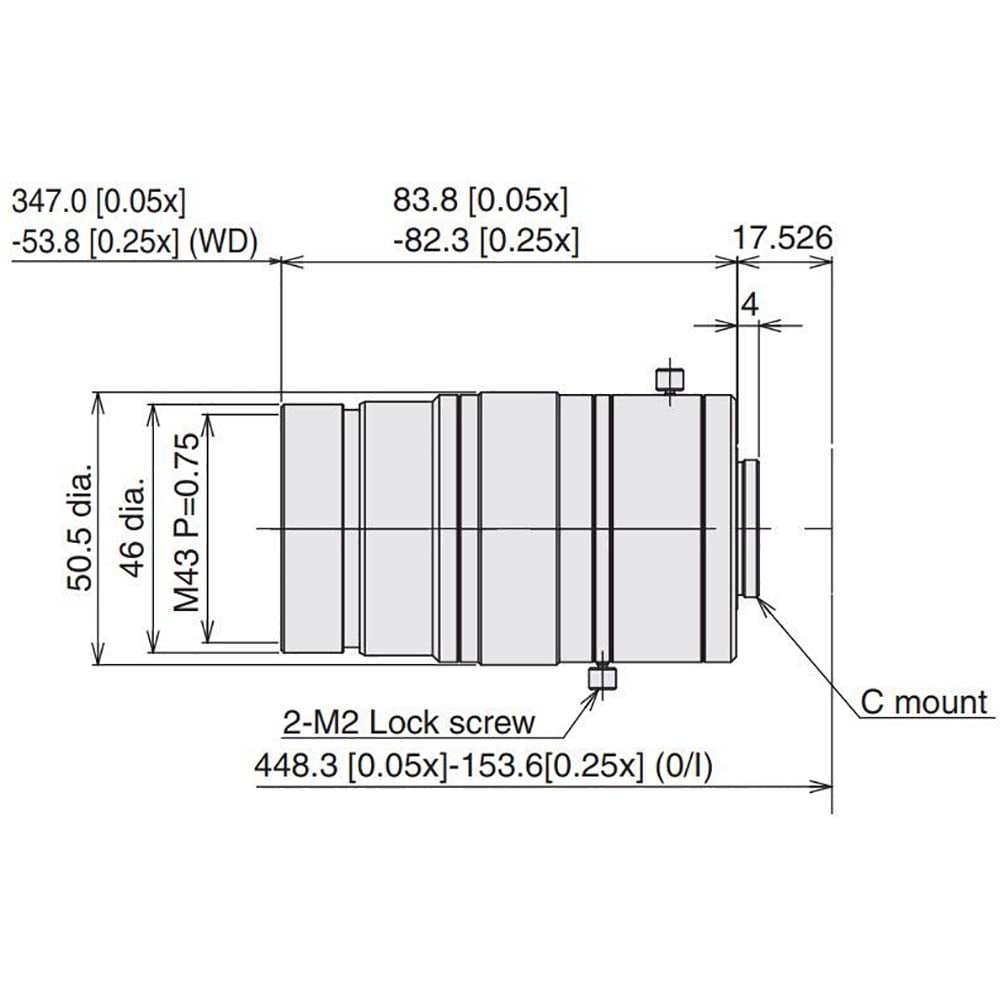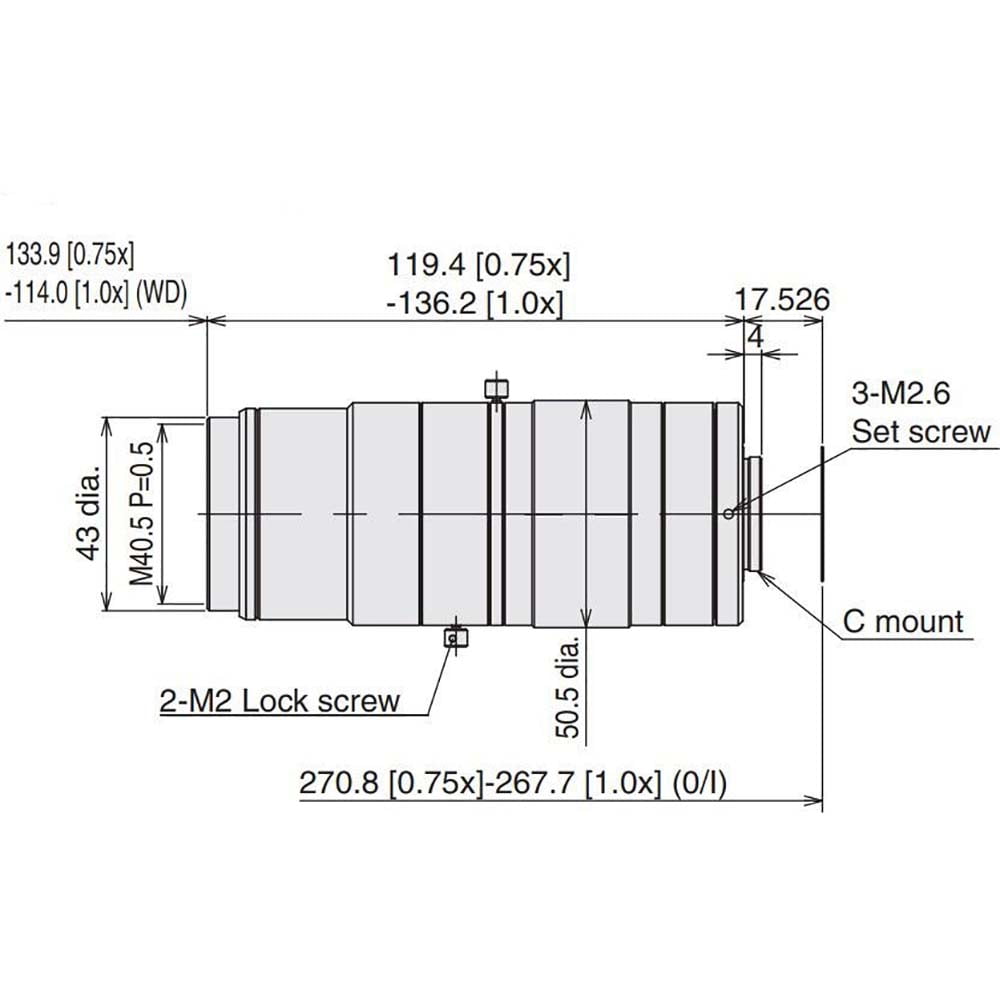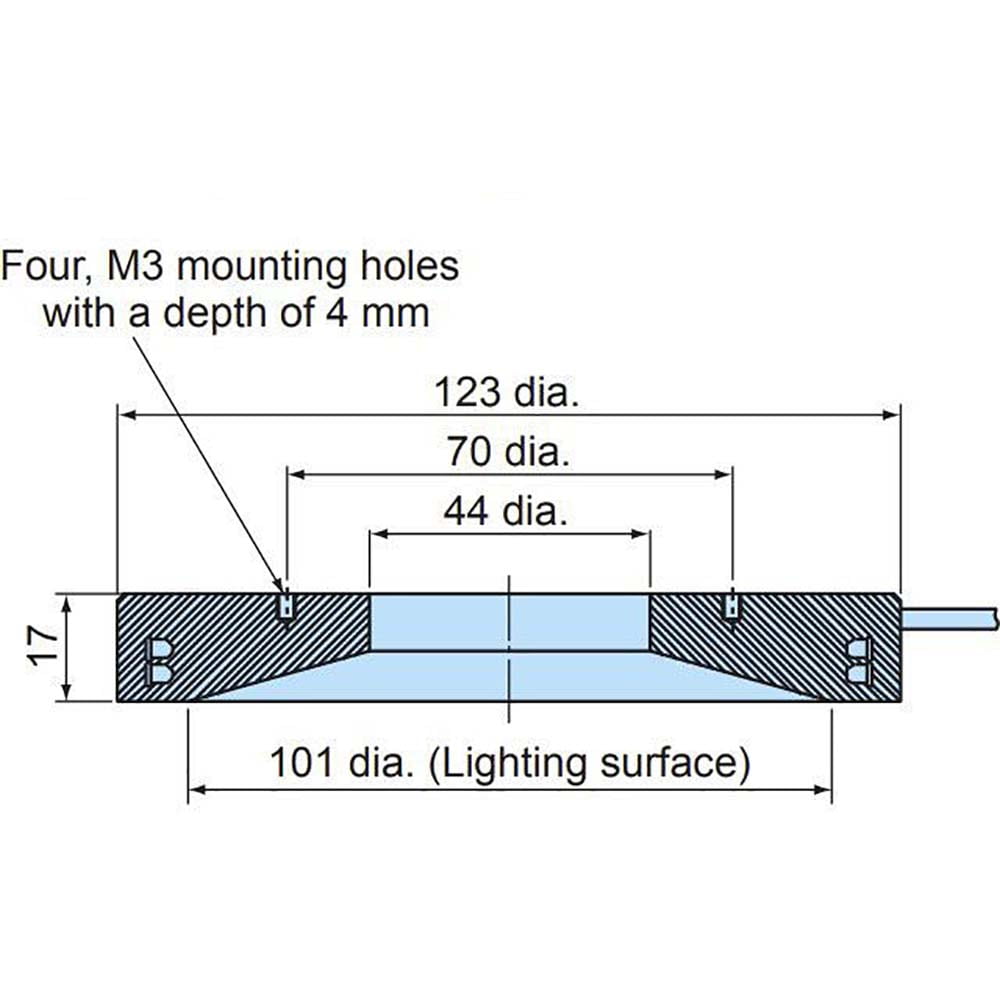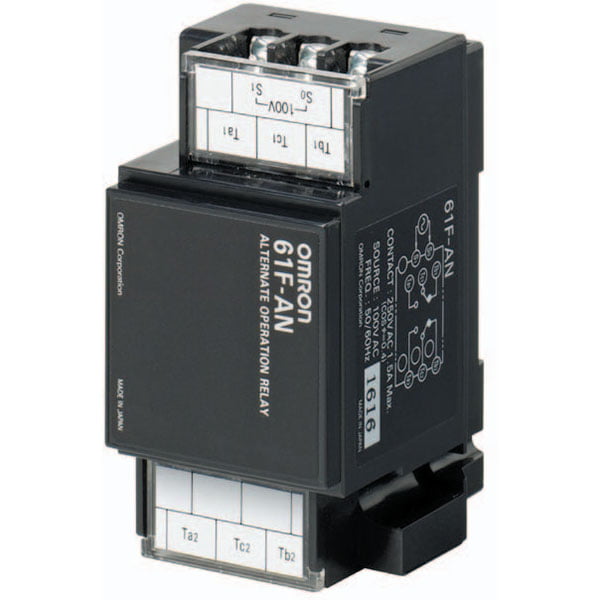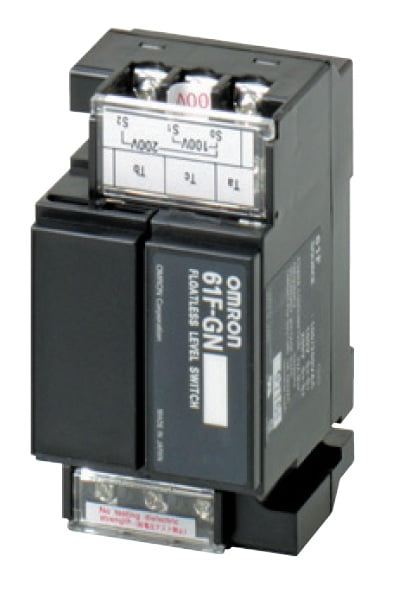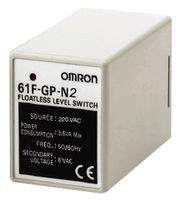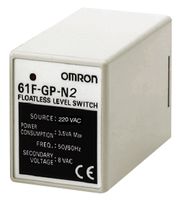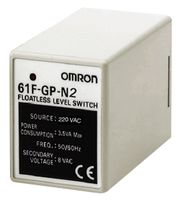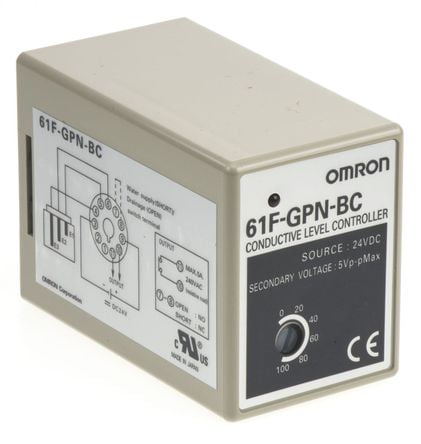The Best Products 2023
Products
As technology continues to advance, there is an increasing demand for reliable and efficient industrial products. Among the most important of these products are sensors, relays, inverters, motion control systems, PLCs, and power supplies. These products are crucial for ensuring the smooth operation of various industrial processes and equipment.
A sensor is an electronic device that detects changes in the environment and sends signals to a control system. There are various types of , including temperature sensors, pressure , and proximity. These are used in a wide range of industries, from manufacturing and automotive to aerospace and defense. play a critical role in monitoring and controlling industrial processes, ensuring that they are safe, efficient, and reliable.
Relays are another essential component of industrial products. They are used to switch electrical circuits on and off, allowing current to flow through the circuit or stopping it altogether. Relays are commonly used in industrial automation systems, where they provide a crucial link between the control system and the equipment being controlled. Relays come in various types, including electromagnetic relays and solid-state relays, and they are used in a wide range of applications, from manufacturing and energy production to transportation and telecommunications.
Inverters are electronic devices that convert direct current (DC) into alternating current (AC). They are commonly used in industrial applications to power equipment and machinery. Inverters are particularly useful in applications where variable speed control is required, such as in motor control systems. Inverters are also used in renewable energy systems, where they are used to convert the DC power generated by solar panels or wind turbines into usable AC power.
Motion control systems are another critical component of industrial. They are used to control the movement of machinery and equipment, ensuring that they move precisely and accurately. Motion control systems typically consist of a motor, a controller, and a feedback device, such as a sensor or encoder. These systems are used in a wide range of industries, from manufacturing and robotics to aerospace and defense.
PLCs, or programmable logic controllers, are another essential component of industrial . They are used to control and automate industrial processes, such as assembly lines, packaging machines, and chemical processing plants. PLCs are programmable, meaning that they can be customized to perform specific tasks, making them highly versatile and adaptable to a wide range of applications.
Finally, power supplies are another critical component of industrial . They are used to convert AC power into DC power, providing a reliable source of power for industrial equipment and machinery. Power supplies come in various types, including linear power supplies and switch-mode power supplies. They are used in a wide range of industries, from manufacturing and telecommunications to medical equipment and aerospace.
In conclusion, sensors, relays, inverters, motion control systems, PLCs, and power supplies are all crucial industrial parts that play a critical role in ensuring the smooth operation of various industrial processes and equipment. These parts are highly versatile and adaptable, making them invaluable in a wide range of applications. As technology continues to advance, the demand for these parts is only likely to increase, making them an essential component of modern industrial systems.
SENSORS
Sensors: The Key to Unlocking a World of Information
From smartphones to industrial machinery, sensors are an essential part of our daily lives. They enable us to gather data about the world around us and make informed decisions based on that information. Sensors are used in a wide range of applications, from environmental monitoring to medical devices, and are critical to the operation of many complex systems.
So, what exactly are sensors? A sensor is a device that detects a physical or chemical property and converts it into an electrical signal. Sensors can measure everything from temperature and pressure to light and sound, and they can be designed to detect specific substances such as gases, chemicals, and biological molecules.
One of the most common types of sensors is the accelerometer, which is used in smartphones and other devices to detect motion and orientation. Accelerometers work by measuring the acceleration of an object, which can be used to determine its velocity and position. This information can be used to control the device or to provide feedback to the user.
Another important type of sensor is the temperature sensor, which is used in a wide range of applications from HVAC systems to medical devices. Temperature sensors can be designed to measure the temperature of liquids, gases, or solids, and can be used to monitor the temperature of a room or a piece of equipment.
Pressure sensors are another critical type of sensor that are used in many industrial and medical applications. These sensors can be used to measure the pressure of gases or liquids, and can be used to monitor the pressure inside a container, a pipeline, or a patient’s bloodstream.
In addition to these common types of sensors, there are many other types of sensors that are used in a wide range of applications. For example, chemical sensors can be used to detect the presence of specific chemicals, such as carbon monoxide or methane. Biological sensors can be used to detect the presence of bacteria, viruses, or other microorganisms.
One of the most exciting areas of sensor technology is the development of smart sensors, which can communicate with other devices and systems to provide real-time data and analysis. Smart sensors Products can be used to monitor the health of industrial equipment, to track the movements of vehicles and pedestrians, and to provide real-time feedback to medical devices.
Despite the many benefits of sensors, there are also some challenges that come with their use. For example, sensors can be expensive to develop and maintain, and they can be vulnerable to environmental factors such as temperature, humidity, and electromagnetic interference. Additionally, sensors can generate large amounts of data, which can be difficult to process and analyze.
Despite these challenges, the use of sensors is likely to continue to grow in the coming years Products . As more and more devices become connected to the internet and to each other, sensors will play an increasingly important role in enabling these devices to communicate and to make smarter, more informed decisions.
In conclusion, sensors Products are an essential part of our modern world, enabling us to gather data about the world around us and to make informed decisions based on that information. From smartphones to industrial machinery, sensors are critical to the operation of many complex systems, and their use is likely to continue to grow in the coming years. Whether you are an engineer, a scientist, or just a curious person, sensors are a fascinating topic that is worth exploring further.
RELAY
A Critical Component in Electrical Circuits
A relay Products is an electrical switch that allows an electrical circuit Products to be controlled by a separate low-power signal. It is a critical component in many electrical systems, from household appliances to industrial machinery. The relay’s ability to isolate high-power circuits from low-power control circuits is what makes it so useful.
Relays consist of two main parts: the coil and the contacts. The coil is an electromagnet that, when energized, creates a magnetic field that pulls the contacts together. When the coil is de-energized, the contacts return to their original position. This simple mechanism allows the relay to switch high-power circuits on and off with a low-power signal.
Relays come in many different types and configurations. The most common type is the electromagnetic relay, which uses an electromagnet to pull the contacts together. Another type is the solid-state relay, which uses a semiconductor to switch the high-power circuit. There are also latching relays, which remain in their last state even after the power is removed, and time-delay relays, which switch on or off after a set amount of time.
Relays are used in a wide range of applications. In household appliances, relays Products are used to control the compressor in a refrigerator or the heating element in an oven. In industrial machinery, relays are used to control motors, pumps, and other high-power devices. Relays are also used in automotive applications, such as controlling the headlights and windshield wipers.
One of the key advantages of using a relay is its ability to isolate the control circuit from the high-power circuit. This means that the low-power control circuit can be safely separated from the high-voltage circuit, reducing the risk of electrical shock or damage to the control circuit. Relays also allow for remote control of high-power circuits, making them ideal for applications where the control circuit needs to be located far away from the high-power circuit.
In conclusion, the relay is a critical component in many electrical systems Products. Its ability to isolate high-power circuits from low-power control circuits makes it a versatile and useful device in a wide range of applications. Whether you’re controlling a household appliance or an industrial machine, the relay is an essential part of the electrical circuit.
INVERTERS
The Power of Conversion
Inverters Products are electronic devices that convert direct current (DC) into alternating current (AC). They are used in a variety of applications, from powering small appliances to running entire buildings. Inverters have become increasingly popular in recent years due to their ability to provide clean and reliable power.
The basic function of an inverter is to take the DC power from a battery or other source and convert it into AC power that can be used by household appliances or other devices. The AC power produced by an inverter is typically sinusoidal in waveform, which means it is a smooth, continuous curve that provides a steady flow of power.
One of the key benefits of using an inverter is that it can provide power in areas where there is no access to the electrical grid. This is particularly useful for people who live in remote locations or for those who need to power equipment in off-grid locations. Inverters can also be used as backup power sources in case of power outages.
Another advantage of using an inverter is that it can provide clean power. Traditional generators produce power that is often dirty or unstable, which can damage sensitive electronic equipment. Inverters, on the other hand, produce clean power that is safe for use with all kinds of devices.
There are several different types of inverters available, including grid-tied inverters, off-grid inverters, and hybrid inverters. Grid-tied inverters are designed to work with the electrical grid and are typically used in residential and commercial applications. Off-grid inverters are used in remote locations where there is no access to the electrical grid. Hybrid inverters are a combination of both grid-tied and off-grid inverters and can be used in a variety of applications.
Inverters are also available in a range of sizes and power outputs. Small inverters are designed to power small appliances or electronic devices, while larger inverters can be used to power entire buildings or industrial equipment. The size and power output of an inverter will depend on the specific application and the amount of power that is required.
In conclusion, inverters Products are an essential component of modern power systems. They provide clean and reliable power that can be used in a variety of applications, from powering small appliances to running entire buildings. With the increasing demand for clean and reliable power, inverters are sure to play an even greater role in the future of energy production.
MOTION CONTROL
The Future of Precision Movement
In today’s world, motion control Products has become an essential part of various industries, ranging from aerospace to robotics. It refers to the process of regulating the movement of machinery or systems with the help of advanced technologies like sensors, actuators, and controllers. Motion control not only enhances the accuracy and efficiency of the machines but also reduces errors and minimizes downtime.
One of the primary applications of motion control is in manufacturing. With the help of precision movement, machines can produce high-quality products with minimal wastage. This is especially important in industries like the automotive sector, where even the slightest variation in product dimensions can lead to significant defects. Motion control ensures that the machines move precisely as per the design specifications, resulting in consistent and reliable output.
Another area where motion control is gaining traction is in the field of robotics. Robots are becoming increasingly common in various industries, and motion control plays a crucial role in their functioning. With the help of advanced sensors and control systems, robots can move with greater precision and accuracy, making them ideal for tasks that require high levels of dexterity and speed.
Motion control is also used extensively in the aerospace industry. In aircraft, precision movement is critical for maintaining stability and control, especially during takeoff and landing. Motion control systems help regulate the movement of various components like flaps, rudders, and landing gear, ensuring that the aircraft stays on course and avoids accidents.
Apart from these industries Products, motion control is also used in medical equipment, packaging machines, and even in entertainment systems like theme park rides. With the advancements in technology, motion control systems are becoming more sophisticated and efficient, making them an indispensable tool for many industries.
In conclusion, motion control is a crucial aspect of modern machinery and systems. It enhances precision, accuracy, and efficiency, making it an essential tool for various industries. As technology Products continues to evolve, we can expect to see even more advanced motion control systems that will revolutionize the way we move and control our machines.
PLC
The Backbone of Industrial Automation
Programmable Logic Controllers (PLCs) have become an integral part of industrial automation systems. PLCs Products are specialized computers that are designed to control the operation of machines and processes in manufacturing plants, water treatment facilities, power plants, and other industries. They are used to automate repetitive and complex tasks, improve efficiency, and reduce labor costs.
PLCs are designed to be rugged and reliable, capable of operating in harsh environments with extreme temperatures, humidity, and vibration. They are programmed to perform specific tasks, such as controlling the speed of a motor, monitoring temperature and pressure, and controlling the flow of fluids. PLCs can also be programmed to perform complex tasks, such as coordinating the operation of multiple machines and processes.
The basic components of a PLC Products system include a processor, input/output (I/O) modules, and programming software. The processor is the brain of the system, responsible for executing the control program and communicating with the I/O modules. The I/O modules provide the interface between the PLC and the external devices, such as sensors, actuators, and other control devices. The programming software is used to create and modify the control program, which is stored in the memory of the PLC.
PLCs Products offer several advantages over traditional control systems. They are more flexible and adaptable, allowing for quick and easy modifications to the control program. They are also more reliable, with built-in diagnostics and fault detection capabilities that can help identify and correct problems before they cause downtime. Additionally, PLCs can be networked together to form a distributed control system, allowing for centralized monitoring and control of multiple processes and machines.
PLCs have revolutionized industrial automation, allowing for greater efficiency, productivity, and safety in manufacturing and other industries. They have become an essential tool for engineers and technicians, providing a powerful and flexible platform for controlling and monitoring complex processes. As technology continues to evolve, PLCs will continue to play a critical role in the automation of industrial processes, helping to drive innovation and progress in manufacturing and other industries.
POWER SUPPLIES
The Backbone of Your Electronics
Power supplies are the unsung heroes of the electronics world. They are the devices that provide the necessary power to run all of our electronic devices, from our smartphones to our laptops to our desktop computers. Without power supplies, our electronic devices would be nothing more than expensive paperweights.
A power supply is a device that converts AC power Products from the wall outlet into DC power that can be used by electronic devices. There are two main types of power supplies: linear and switching. Linear power supplies are simple and reliable, but they are not very efficient. Switching power supplies are more complex, but they are much more efficient.
The efficiency of a power supply Products is important because it affects the amount of heat that is generated. The less efficient a power supply is, the more heat it generates. This can lead to problems such as overheating and premature failure. In addition, inefficient power supplies waste energy, which is not only bad for the environment but also for your wallet.
When choosing a power supply, it is important to consider the wattage Products, voltage, and amperage requirements of your electronic device. The wattage requirement is the amount of power that the device needs to operate. The voltage requirement is the amount of voltage that the device needs to operate. The amperage requirement is the amount of current that the device needs to operate.
It is also important to choose a power supply that is compatible with your device. Many electronic devices have specific power supply requirements, and using the wrong power supply can damage your device or even cause a fire Products.
In addition to choosing the right power supply, it is important to take care of your power supply. Keep it clean and free of dust and debris, and make sure that it is stored in a cool, dry place. If you notice any signs of damage or wear and tear, such as frayed wires or a cracked casing, replace the power supply immediately.
In conclusion, power supplies are an essential component of our electronic devices Products. They provide the necessary power to keep our devices running smoothly and efficiently. When choosing a power supply, it is important to consider the wattage, voltage, and amperage requirements of your device, as well as the compatibility of the power supply. By taking care of your power supply Products, you can ensure that your electronic devices will continue to function properly for years to come.
SERVO MOTORS
The Powerhouse of Automation
In the world of automation, servo motors are the unsung heroes that power the machines Products we rely on every day. These small yet powerful motors are essential in a wide range of industries, from manufacturing to robotics, and are responsible for precise and efficient movement control.
So what exactly are servo motors? In simple terms, they are electric motors that use a closed-loop control system to accurately position the output shaft. This means that they can precisely control the speed, direction, and position of a mechanical system.
One of the key advantages of servo motors is their ability to provide high torque at low speeds. This makes them ideal for applications that require precise and controlled movement, such as robotic arms or CNC machines. Additionally, servo motors are highly reliable and have a long lifespan, making them a cost-effective solution for many industries Products.
Another advantage of servo motors Products is their versatility. They can be used in a wide range of applications, from small hobby projects to large-scale industrial machinery. They are also available in a variety of sizes and power ratings, making it easy to find the right motor for any application.
One of the most common uses of servo motors is in robotics. They are used to control the movement of robotic arms, legs, and other appendages, allowing robots to perform complex tasks with precision and accuracy. Servo motors are also used in industrial automation, where they can control the movement of conveyor belts, assembly lines, and other machinery Products.
Despite their many advantages, servo motors do have some limitations. They can be expensive compared to other types of motors Products, and they require a complex control system to operate. However, the benefits they provide in terms of precision and control make them well worth the investment.
In conclusion, servo motors are a key component in the world of automation, providing precise and efficient movement control in a wide range of applications. Their versatility, reliability, and high torque make them an essential tool for anyone working in robotics, manufacturing, or industrial automation. As technology continues to advance, we can expect to see even more innovative uses for servo motors Products in the future.
SERVO DRIVER
A servo driver is a device that controls the movement of a servo motor Products. This type of motor is commonly used in industrial automation, robotics, and other applications where precise control of movement is necessary. The servo driver receives input signals from a controller and uses them to control the speed, direction, and position of the motor Products.
One of the key advantages of a servo driver is its ability to provide highly accurate and precise control over motor movement. This is achieved through the use of feedback sensors, such as encoders or resolvers, which provide real-time information about the motor’s position and speed. The servo driver uses this information to adjust the motor’s output to achieve the desired movement.
Another advantage of servo drivers is their ability to provide high torque at low speeds. This is particularly useful in applications where heavy loads need to be moved with precision, such as in robotics or CNC machines Products. Servo drivers can also be used to control multiple motors simultaneously, allowing for more complex movements and tasks.
There are several different types of servo drivers available, each with its own set of features and capabilities. Some of the most common types include pulse width modulation (PWM) drivers, analog voltage drivers, and digital signal processors (DSP) drivers. Each type has its own advantages and disadvantages, and the choice of driver will depend on the specific requirements of the application.
When selecting a servo driver, it is important to consider factors such as the motor’s power requirements, the required level of precision, and the type of feedback sensor that will be used. It is also important to choose a driver Products that is compatible with the controller and other components of the system.
In conclusion, a servo driver is a critical component in many industrial automation and robotics applications. It provides precise control over motor movement, allowing for complex and precise tasks to be performed. When selecting a servo driver Products, it is important to consider the specific requirements of the application and choose a driver that is compatible with the system Products.
TOUCH SCREENS
A Revolutionary Technology
In today’s world, touch screens have become an integral part of our daily lives. From smartphones to ATMs, from digital signage to gaming consoles, touch screens are everywhere. The technology has revolutionized the way we interact with devices and has made our lives easier and more convenient.
A touch screen is a display that can sense and respond to touch, allowing users to interact with the device by touching icons, buttons, and other graphical elements on the screen. The technology Products has come a long way since its inception in the 1960s, and today touch screens are more advanced than ever before.
One of the biggest advantages of touch screens is their intuitive nature. With touch screens, users can interact with devices in a more natural and intuitive way. For example, with a smartphone, users can swipe, pinch, and tap to navigate through menus, launch apps, and perform various tasks. This makes using devices more accessible and user-friendly, especially for those who are not tech-savvy.
Another advantage of touch screens is their versatility. Touch screens Products can be used in a wide range of applications, from smartphones and tablets to kiosks and digital signage. They can also be used in industrial settings, where they can withstand harsh environments and heavy use.
Touch screens are also highly customizable, allowing manufacturers to create devices with unique features and functionality. For example, some touch screens can sense pressure, allowing users to draw and write on the screen with a stylus. Others can sense multiple touches at once, allowing for multi-touch gestures like pinch-to-zoom.
Despite their many advantages, touch screens also have some drawbacks. One of the biggest is their susceptibility to fingerprints and smudges. This can make the screen difficult to read and can also affect the accuracy of touch inputs.
Another drawback is the cost. Touch screens can be more expensive than traditional displays, which can make devices that use them more expensive as well. However, as the technology continues to advance and become more widespread, the cost is likely to come down.
In conclusion, touch screens are a revolutionary technology that has changed the way we interact with devices. They are intuitive, versatile, and highly customizable, and they have made our lives easier and more convenient. While they do have some drawbacks, the benefits far outweigh the costs, and touch screens are likely to continue to be an important part of our lives for years to come Products.
SWITCH
The Ultimate Gaming Console for All
When it comes to gaming consoles Products , there are plenty of options to choose from. However, if you’re looking for a console that offers versatility, portability, and a wide range of games, then the Nintendo Switch is the perfect choice for you.
The Switch is a hybrid console that allows you to play your favorite games on your TV or in handheld mode. It’s designed to be a versatile gaming machine that can adapt to your lifestyle. Whether you’re at home or on the go, the Switch can provide you with hours of entertainment.
One of the most significant advantages of the Switch is its portability. You can take it with you wherever you go, and you don’t need to worry about carrying a bulky console. The Switch’s compact design makes it easy to carry around, and its battery life can last up to 9 hours, depending on the game you’re playing.
Another great feature of the Switch is its Joy-Con controllers. These controllers can be detached from the console and used as separate controllers for multiplayer games. You can also use them to play games in tabletop mode, where you can prop up the console on a table and play with friends.
The Switch offers a vast library of games, ranging from classic Nintendo titles to third-party games. You can play games like Super Mario Odyssey, The Legend of Zelda: Breath of the Wild, and Animal Crossing: New Horizons. There are also plenty of indie games available on the Switch, which are perfect for playing on the go.
If you’re a fan of online gaming, the Switch Products has you covered. You can play online with friends or join online communities to play with other gamers. The Switch also has a built-in social network called the Nintendo Switch Online app, which allows you to chat with friends, share screenshots, and access exclusive content.
In conclusion, the Nintendo Switch is an excellent gaming console that offers versatility, portability, and a vast library of games. Whether you’re a casual gamer or a hardcore gamer, the Switch has something for everyone. So why not switch to the Switch and experience the ultimate gaming console today?
I / O MODULES
The Backbone of Industrial Automation
In the world of industrial automation, I/O modules play a crucial role in ensuring seamless communication between various components of an automated system. These modules act as a bridge between the physical world of sensors and actuators and the digital world of programmable logic controllers (PLCs) and other control devices.
I/O modules Products are essentially input/output devices that interface with the sensors and actuators in an automated system. They receive signals from sensors such as temperature sensors, pressure sensors, and proximity sensors, and convert them into digital signals that can be processed by the PLC. Similarly, they receive digital signals from the PLC and convert them into analog signals that can be used to control actuators such as motors, valves, and solenoids.
I/O modules come in various types and configurations, depending on the specific requirements of the automated system. Some of the common types of I/O modules include:
– Digital Input Modules: These modules Products receive signals from digital sensors such as limit switches, push buttons, and proximity sensors. They typically have multiple input channels and can be configured to detect different types of signals such as pulse, level, and edge. – Digital Output Modules: These modules control digital actuators such as relays, solenoids, and LEDs Products.
They typically have multiple output channels and can be configured to provide different types of output signals such as pulse, on/off, and PWM. – Analog Input Modules: These modules receive signals from analog sensors such as temperature sensors, pressure sensors, and flow meters. They typically have multiple input channels and can be configured to detect different types of signals such as voltage, current, and resistance. – Analog Output Modules: These modules control analog actuators such as motors, valves, and pumps. They typically have multiple output channels and can be configured to provide different types of output signals such as voltage, current, and PWM.
I/O modules are designed to be modular and scalable, which means that they can be easily added or removed from an automated system as per the changing requirements. They are also designed to be rugged and reliable, which is essential for industrial environments where harsh conditions such as high temperature, humidity, and vibration are common.
In conclusion, I/O modules are the backbone of industrial automation, providing a seamless interface between the physical world of sensors and actuators and the digital world of PLCs and other control devices. They are available in various types and configurations, and are designed to be modular, scalable, and rugged. With the increasing adoption of automation in various industries, the demand for I/O modules is only going to increase in the coming years.
SOCKETS
The Unsung Heroes of the Electrical World
Sockets are one of the most important components of any electrical system, yet they are often overlooked and taken for granted. They are the unsung heroes that allow us to plug in our devices and power them up. In this article, we will explore the world of sockets and their importance in our daily lives.
What are Sockets?
A socket is a device that provides Products a safe and secure connection between an electrical device Products and a power source. It is designed to fit a specific type of plug, ensuring that the connection is secure and that the electrical current flows smoothly.
Sockets come in a variety of shapes and sizes, depending on their intended use. Some are designed for use with low-voltage devices, while others are designed for high-voltage applications Products. Some sockets are designed to be used indoors, while others are designed for outdoor use.
Why are Sockets Important?
Sockets are an essential Products component of any electrical system. They provide a safe and secure connection between electrical devices and power sources, ensuring that the electrical current flows smoothly and that the devices are powered up.
Without sockets, we would not be able to power our devices and appliances. We would be forced to rely on batteries, which are not always practical or cost-effective. Sockets also provide a way to connect multiple devices to a single power source, making it easier to manage and organize our electrical systems.
Types of Sockets
There are many different types of sockets, each designed for a specific purpose. Some of the most common types of sockets include:
– Wall Sockets: These are the most common type of socket and are found in almost every home and building. They are designed to be mounted on walls and provide a safe and secure connection for electrical devices Products.
– Plug Sockets: These are designed to be plugged into wall sockets and provide a way to connect multiple devices to a single power source.
– Outdoor Sockets: These are designed to be used outdoors and are often waterproof and weather-resistant Products.
– USB Sockets: These are designed to provide a way to charge USB devices, such as smartphones and tablets Products.
– Industrial Sockets: These are designed for use in industrial settings and are often designed to withstand harsh conditions and heavy use.
Conclusion
Sockets Products may not be the most glamorous component of an electrical system, but they are one of the most important Products. They provide a safe and secure connection between electrical devices and power sources, ensuring that our devices are powered up and ready to use.
Whether you are plugging in your smartphone or powering up a piece of heavy machinery, sockets are an essential component of any electrical system. So the next time you plug in your device, take a moment to appreciate the unsung hero that makes it all possible – the socket.
PLC ACCESSORIES
Enhancing the Efficiency of Industrial Automation
Programmable Logic Controllers (PLCs) are widely used in industrial automation to control and monitor various processes Products. They are reliable, versatile, and can be easily programmed to perform complex tasks. However, to maximize their potential, PLCs Products require a range of accessories that can enhance their functionality and efficiency. In this article, we will explore some of the most common PLC accessories and their benefits.
1. Communication Modules: Communication modules enable PLCs to communicate with other devices such as sensors, actuators, and HMIs (Human Machine Interfaces). They provide a range of communication protocols such as Ethernet, Modbus, Profibus, and CAN, allowing PLCs to exchange data with other devices in real-time. This enhances the speed and accuracy of data transfer, enabling faster decision-making and improved process control.
2. Input/Output Modules: Input/Output (I/O) modules provide the interface between the PLC and the external devices. They enable the PLC to receive data from sensors and send signals to actuators. They come in various types such as analog, digital, and specialty I/O, and can be customized to meet specific application requirements. I/O modules enhance the flexibility and scalability of PLC systems, enabling them to handle a wide range of input and output signals.
3. Power Supplies: Power supplies provide the necessary voltage and current to power the PLC and its accessories. They come in various sizes and capacities, depending on the power requirements of the PLC system. High-quality power supplies ensure stable and reliable operation of the PLC, preventing downtime and system failures.
4. Programming Software: Programming software is used to create and edit PLC programs Products. It provides a user-friendly interface for writing and debugging PLC code, enabling users to customize the PLC to meet their specific requirements. Programming software also provides advanced features such as simulation, monitoring, and data logging, enabling users to test and optimize their PLC programs before deployment.
5. Mounting Accessories: Mounting accessories are used to secure the PLC Products and its accessories to the mounting surface. They provide a stable and secure platform for the PLC Products , preventing vibration and movement that can damage the system. Mounting accessories also provide easy access to the PLC for maintenance and troubleshooting.
In conclusion, PLC accessories play a crucial role in enhancing the efficiency and functionality of industrial automation systems. They provide a range of features such as communication, input/output, power, programming, and mounting, enabling PLCs Products to handle complex tasks with ease. By investing in high-quality PLC accessories, businesses can improve their productivity, reduce downtime, and achieve greater operational efficiency.
BALL-BEARING
The Unsung Hero of Modern Machinery
Ball-bearings are an essential component of modern machinery, yet they are often overlooked due to their small size and unassuming appearance. These tiny devices play a crucial role in reducing friction and enabling smooth motion in a wide range of applications, from cars and airplanes to industrial machinery and household appliances.
So, what exactly is a ball-bearing? Simply put, it is a type of rolling-element bearing that uses balls to reduce friction between two moving parts. The balls are typically made of steel or ceramic Products and are held in place by a cage or retainer. When the inner and outer races of the bearing move relative to each other, the balls roll along the raceways, reducing friction and enabling smooth rotation.
One of the key advantages of ball-bearings is their ability to handle both radial and axial loads. Radial loads are forces that act perpendicular to the axis of rotation, while axial loads are forces that act parallel to the axis of rotation. Ball-bearings are designed to handle both types of loads, making them versatile and widely used in various applications.
Another advantage of ball-bearings Products is their durability and longevity. When properly lubricated and maintained, ball-bearings can last for years, even in harsh environments and high-speed applications. This makes them a cost-effective solution for many industries, as they can reduce maintenance costs and downtime.
Ball-bearings come in many different sizes and configurations, depending on the specific application. Some common types of ball-bearings include deep groove ball-bearings, angular contact ball-bearings, and thrust ball-bearings. Each type has its own unique design and features, making them suitable for different types of loads and applications.
In conclusion, ball-bearings Products may be small, but they are mighty. These unsung heroes of modern machinery are essential for reducing friction, enabling smooth motion, and increasing the durability and longevity of various applications. From cars and airplanes to industrial machinery and household appliances, ball-bearings are a critical component that we often take for granted. So, the next time you use a machine or appliance, take a moment to appreciate the humble ball-bearing that makes it all possible.
CIRCUIT BREAKER
A Vital Component in Electrical Systems
A circuit breaker is a crucial component in electrical systems that protects them from overloading and short circuits. It is designed to interrupt the flow of electrical current when the current exceeds a certain level or when a fault occurs in the circuit. This mechanism prevents damage to the electrical system and reduces the risk of electrical fires.
Circuit breakers come in various sizes and types, depending on the application and the amount of current they can handle. The most common types of circuit breakers are thermal-magnetic, magnetic, and hydraulic-magnetic. Each type has its own advantages and disadvantages, and the selection of the appropriate type depends on the specific requirements of the electrical system.
The thermal-magnetic circuit breaker is the most common type and is used in residential and commercial applications. It consists of a bimetallic strip that bends when it heats up due to an overload or short circuit. This movement triggers a mechanical switch that opens the circuit and interrupts the flow of current. The magnetic circuit breaker, on the other hand, uses an electromagnet to detect overloads and short circuits. When the current exceeds a certain level, the electromagnet pulls a mechanical switch that opens the circuit. The hydraulic-magnetic circuit breaker is similar to the magnetic type but uses a hydraulic mechanism to trip the breaker.
Circuit breakers are essential components in electrical systems because they protect against electrical fires and damage to equipment. They also provide a convenient way to reset the circuit after a fault has occurred. Instead of replacing a fuse, which can be time-consuming and costly, a circuit breaker can be reset by simply flipping a switch.
In conclusion, circuit breakers Products are vital components in electrical systems that protect against overloading and short circuits. They come in various types and sizes and are designed to interrupt the flow of current when a fault occurs. The selection of the appropriate type of circuit breaker depends on the specific requirements of the electrical system. With the help of circuit breakers, electrical systems can operate safely and efficiently.
CPU
The Brain of Your Computer
Central Processing Unit, or CPU, is the most important part of your computer. It is also known as the brain of your computer. The CPU is responsible for executing all the instructions that are given to the computer. It is the most crucial component of your computer system, without which your computer cannot function.
The CPU is located on the motherboard of your computer. It is a small chip that is responsible for processing all the data that is sent to it. The CPU is responsible for performing all the arithmetic and logical operations that are required by the software running on your computer.
The CPU is made up of millions of transistors that are arranged in a specific way. These transistors are used to perform all the calculations that are required by your computer. The CPU operates at a very high speed and can perform millions of calculations per second.
The speed of the CPU Products is measured in GHz, which stands for gigahertz. The higher the GHz, the faster the CPU can process data. The CPU also has a cache memory, which is used to store frequently used data. This cache memory helps to speed up the processing of data.
The CPU is also responsible for managing the communication between different components of your computer. It communicates with the memory, hard drive, and other components to ensure that they are all working together efficiently.
There are two main manufacturers of CPUs: Intel and AMD. Both companies produce CPUs that are used in desktop computers, laptops, and servers. The CPUs produced by these companies are designed to meet the needs of different types of users.
In conclusion, the CPU Products is the most important component of your computer system. It is responsible for executing all the instructions that are given to the computer. The CPU operates at a very high speed and can perform millions of calculations per second. It is the brain of your computer and without it, your computer cannot function.
Showing 1–16 of 1716 results



